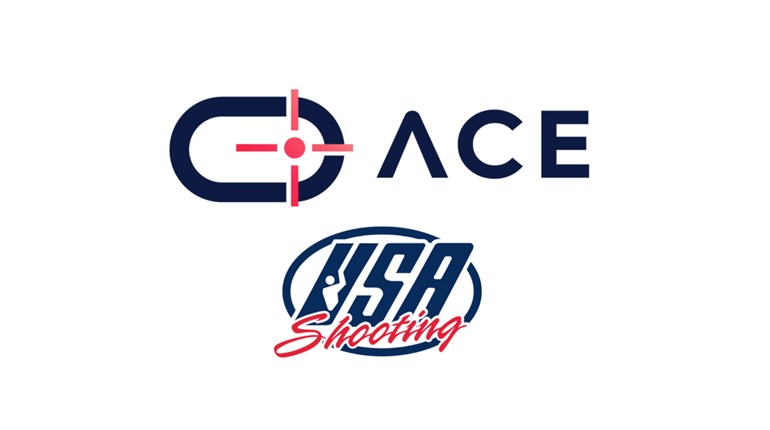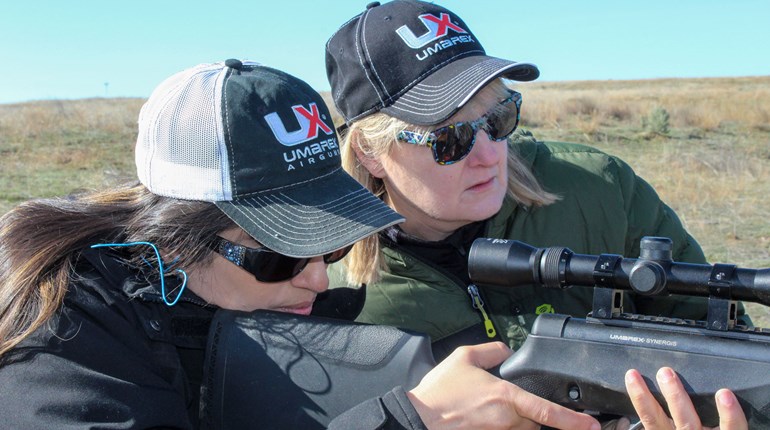
Above: George Mason Van Orden stands next to a match winning target in 1976 fired from the 1000-yard line.
The United States Marine Corps celebrates many warriors. Leathernecks recognize names like Lejeune, Butler, Daly, and “Chesty.” We know their accomplishments. Many times, though, names are not included with the stories. We know actions and results, rather than the people behind them. Thousands of Marines have made incredible contributions still felt today, but their names are remembered only by those who served with them.
One of those unrecognized names represents not just a Marine, but a family. Four generations, totaling more than 100 years of service—each making their own lasting contribution. All of them exceptional Marines. All of them named George Van Orden.

The first George was born in 1878. He obtained appointment to the U.S. Naval Academy at age fifteen, graduating in 1897 as the youngest in his class. Almost immediately, he went to war. When the Spanish-American War began the following year, Van Orden sailed for Cuba as a Midshipman aboard the USS Marblehead. He saw action on ship at the invasion of Guantanamo Bay, and later at the raid on Cienfuegos where 52 Marines and sailors were awarded the Medal of Honor. After two years on ship, he was transferred to the USMC and commissioned as a First Lieutenant.
In 1911, after traveling the world from one duty station to the next, Captain Van Orden attended the Naval War College and the Army School of the Line. He was one of the first Marines to attend the Army Officer graduate school, and the only Marine in his time finishing as honor graduate.
After a year of being a student himself, Van Orden transferred to Norfolk to command Marine Officers School, forerunner of The Basic School. With Marine officer training still in developing stages, he created and instituted a two year course, drawing on instruction received from the Army, as well as his naval experience. His first class of 40 students experienced the most formal and lengthy Marine commissioning program to date. In today’s Corps, a colonel commands The Basic School. Van Orden was only a captain when he set the bar for prospective officers.
In 1915 Van Orden commanded a famously executed landing during the Haiti rebellion, taking Port Au Prince without losing a man. Afterward, his career exploded. At a time when the entire Marine Corps possess less than 350 officers and the Commandant was only a Major General, in less than three years Van Orden progressed from captain to colonel.
In 1917, Van Orden was selected for a duty that influences Marine officer training to this day. He and two others were charged with selecting land for a new base. The Corps was expanding to fight WWI and needed training ground in short order. Their guidance stated it should be near Washington D.C. and “of sufficient size to accommodate approximately 7,500 men with necessary maneuver field and target ranges.” They quickly set their sights on Quantico. Once purchased, the new base became the Marine Corps’ main east coast training facility, and remains so to this day.
Van Orden served six years after selecting Quantico. He founded the 11th Marine Regiment during WWI, attended the Army General Staff College, and returned to Port Au Prince for the final expedition of his career. He retired in 1923. Although he retired and had sacrificed much over the last 30 years, his spirit and commitment remained that of the young lieutenant on Guam. On December 7, 1941, at age 63, just hours after the Japanese bombed Pearl Harbor, Van Orden sent a blunt message directly to the Commandant: “Request that I be restored to active service and ordered to duty. Van Orden.”
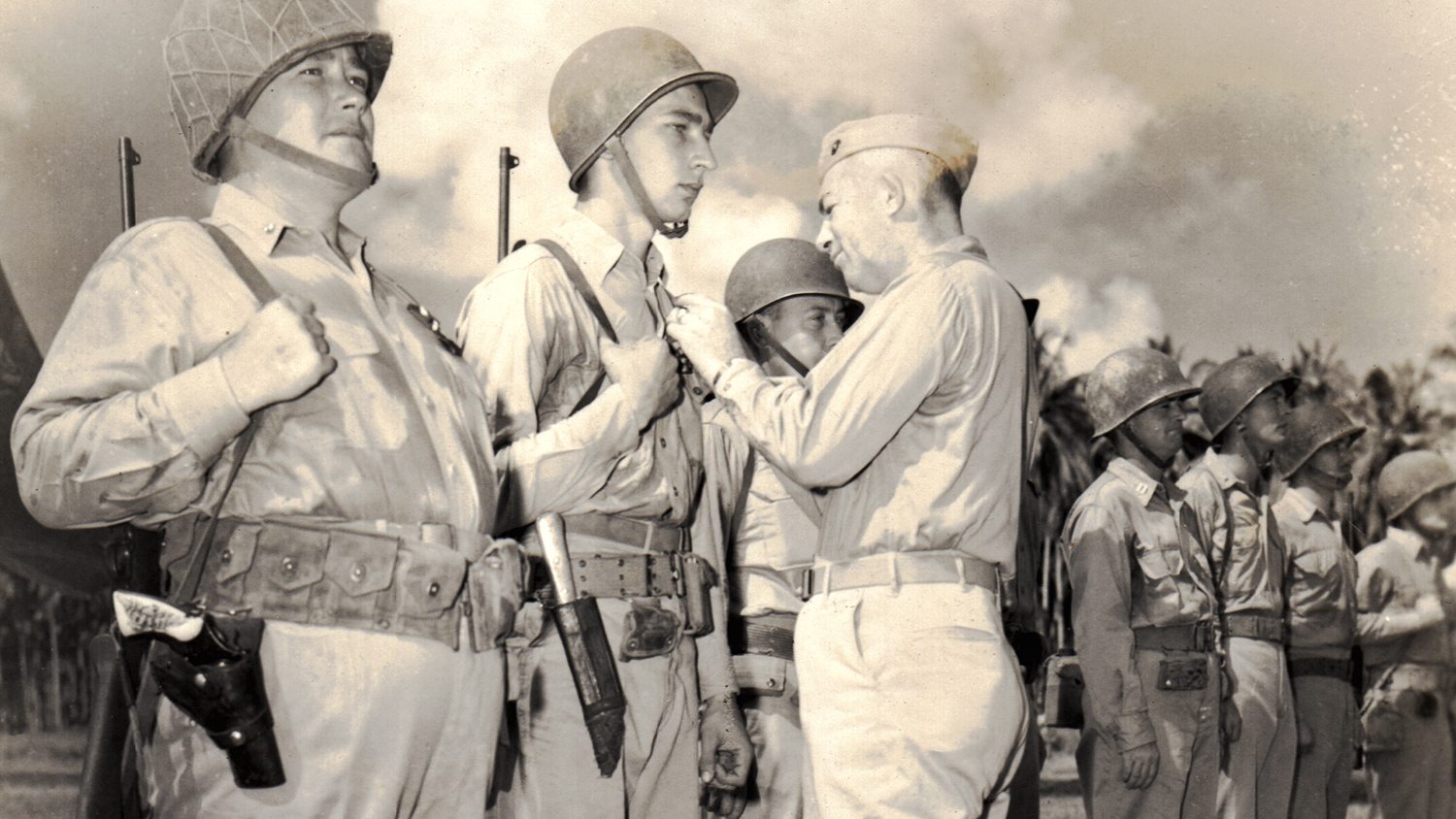
While his father served around the world, George Owen Van Orden grew up fully intending on being a Marine. From the beginning, two things characterized his career: shooting and ordnance training. In his first eight years, Lieutenant “Bang Bang” Van Orden competed in shooting matches at every duty station. He attended advanced weapons courses in Quantico and spent months at sea learning naval gunnery and antiaircraft fire. As a Range Officer and later Chief Range Officer, Van Orden taught marksmanship fundamentals to thousands. “Accuracy is the one thing we are looking for and there is no easy way to get it” he said. “If we do slack work on the rifle range they’ll get slack results on the battlefield, which is bad business in a gun fight.”
George Owen assumed command of the rifle range at Quantico in December of 1939. The primitive scout sniper school fell under his purview. He and Marine Gunner Calvin Lloyd undertook formalizing the program. After extensive research, they published “Equipping the American Sniper.” This expert treatise defined sniper usage and made specific recommendations for their armament. After testing hundreds of rifle/scope combinations, Van Orden picked his perfect match: a Winchester Model 70 bolt action with the 8-power Unertl scope. The USMC purchased limited quantities, but opted against the rifle’s adoption. The scope, however, was selected. Attached to the Model 1903 Springfield, the long slender scope entered WWII and became an icon of early Marine snipers. Van Orden and Lloyd saw their vision of a formal sniper program energize. Small schools opened in different locations, teaching the skills their treatise outlined. Graduates were promptly dispatched to the Pacific.
As Chief Range Officer at the training hub of the Marine Corps, Van Orden had an incredible opportunity to directly affect combat performance in WWII. For his trainees, the affect went beyond skillful manipulation of the trigger. He developed a reputation. They caught his passion and flare and would remember him for it. One Marine Raider recounts:
“His ambidexterity with the .45 caliber service pistol had amazed us all. Once after a spectacular demonstration of pistoling, one of the candidates asked him if he could also fire the rifle left-handed. Van Orden’s immediate response was to dress down the candidate for daring even to suggest that left-handed shooters might be tolerated in the Corps, all the while brandishing his pistol in his left hand.”
Van Orden’s turn to fight came in 1942. He reached the front as the 3rd Marine Regiment Executive Officer. The unit’s first trial came in November 1943 on an island called Bougainville.

As the Third Marines motored toward Cape Torokina, the Japanese opened fire. Artillery hit home, destroying six landing craft and scattering the rest. Marines hit the beach and sprinted through the bullets into the tree line. Confusion ensued as they realized the boats landed in an order almost opposite as planned, and no unit larger than squad size had landed together. Recognizing the chaos and impending disaster, Van Orden climbed aboard a landing craft and headed for the beach. Taking several hits, the boat grounded, and Van Orden reestablished control. Constantly exposed to enemy machine guns, he moved throughout the area forming new units, appointing leaders, and directing the attack. One Marine witnessed him, “blazing away in the direction of the enemy with his pistol… After emptying a magazine at the invisible (at least to me) target, Van Orden stepped back from the rear wall of the bunker, cleared, reloaded, and holstered his pistol … with a self-satisfied grin on his face as if he had just completed a successful string of rapid fire.” As the shore party arrived with supplies after the initial assault waves, Japanese machine guns halted their unloading. Van Orden, “unhesitatingly proceeded to the area and, with utter disregard for his own safety, inspired and encouraged the men to complete their vital task.”
For his heroics, Marines nicknamed their XO “The Beast.” He continued earning this reputation on Bougainville and on Guam in 1944. Despising the safety of the command post, Van Orden was always found “hunting for battle,” as one front line correspondent commented, “with his own private arsenal of pistol, carbine and Johnson light machine gun in order to get ‘one last crack at the Japs.’” His reckless, inspiring leadership won a Legion of Merit, Bronze Star, Purple Heart, and Navy Cross.
Van Orden retired as a Brigadier General in 1949. Establishing a gun shop near Quantico, his reputation in the firearms industry continued to grow. His innovation in sniping and marksmanship would be referenced in future generations, both by Marines and by his family.
Given his heritage, it isn’t surprising that George Mason Van Orden also followed in his fathers’ footsteps. “I remember having a CO rather than a father,” he wrote. It was expected and understood he would be a Marine.
One family trait he inherited, even more so than his father, was shooting. At age 15, George Mason won the Junior National Rifle Championship. Sports Illustrated named him an Olympic hopeful. “Part of his blood contained gun powder,” said a fellow shooter, Col. David Willis, who was “double distinguished” in rifle and pistol shooting and at one time served as CO of Weapons Training Battalion at Quantico.
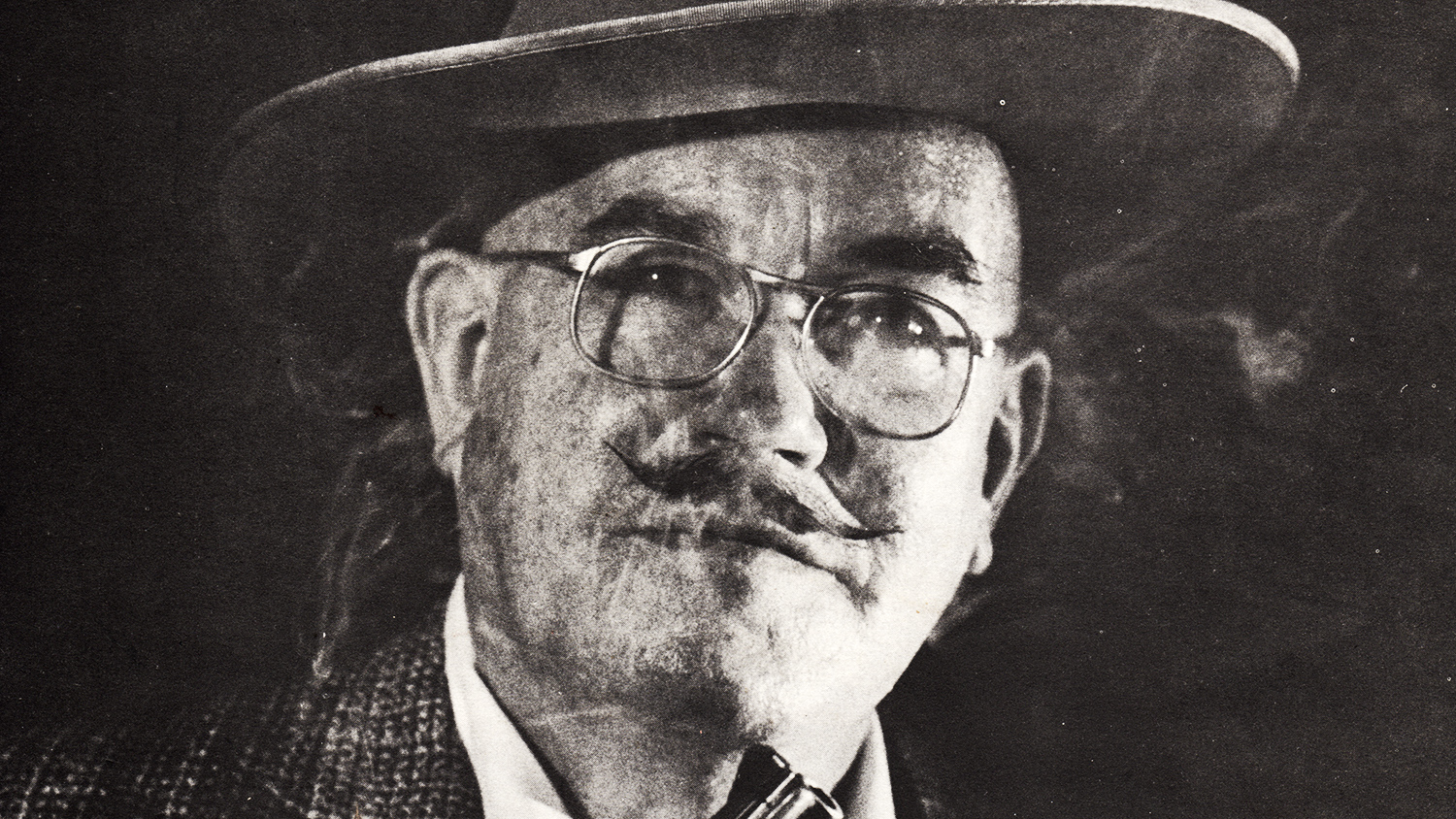
After graduating from Virginia Military Institute, The Basic School, and Engineer Officer Course, Second Lieutenant Van Orden received a peculiar set of orders. His fellow engineer graduates headed to their new units, but he was staying in Quantico. A General there cancelled his original orders, instead detailing him to the range detachment. He wanted the newly commissioned but already reputable shooter to help his rifle team win the 1962 eastern division matches. Van Orden stayed, and the General got his trophy. This experience became a recurring theme throughout his career. He attempted to “retire” from competition shooting several times, but found difficulty being allowed the opportunity to focus on his specialty. Even so, Van Orden dedicated several years to engineering, including two combat tours in Vietnam where he earned a combat action ribbon and Navy Commendation Medal with valor.
Van Orden greatly enhanced the USMC’s reputation of premier marksmanship. He returned to Camp Perry, Ohio for the prestigious national shooting matches several times after winning the junior title as a teenager. In 1967, Marines won first place in the National Team Trophy event. Van Orden fired as team Officer in Charge. His final visit as a competitor occurred in 1979. Winning four trophies in four days, he was dubbed the National Service Rifle Champion. He later wrote that this accomplishment, “was without question the highlight of my shooting career.”
For all his skills, the Marine Corps utilized Van Orden’s knowledge to help change and enhance the marksmanship program. Twice he was assigned to the Marksmanship Training Unit (MTU) in Quantico. Here formed the center of rifleman philosophy and practice. Members were handpicked, regardless of rank or occupation, for their shooting abilities and weapons expertise. At a pivotal time in Marine rifleman training, men like Van Orden were needed.
By the late 1960’s, the USMC began developing its own marksmanship publications. Until that time, it had relied on US Army doctrine. As the Army moved more and more toward training that suited mass volumes of trainees, Marines opted instead to develop quality, precision training, consistent with the reputation that had become the hallmark of Marine riflemen. MTU was put to the task. In 1967, Van Orden authored Fleet Marine Force Manual (FMFM) 1-3 Basic Rifle Marksmanship. He received commendation for “producing the well-written initial manuscript draft,” which “represents the first formal Marine Corps doctrinal publication on the subject.” This manual, along with Van Orden’s second publication, FMFM 1-3A Field Firing Techniques, formed a foundation from which the program could build.
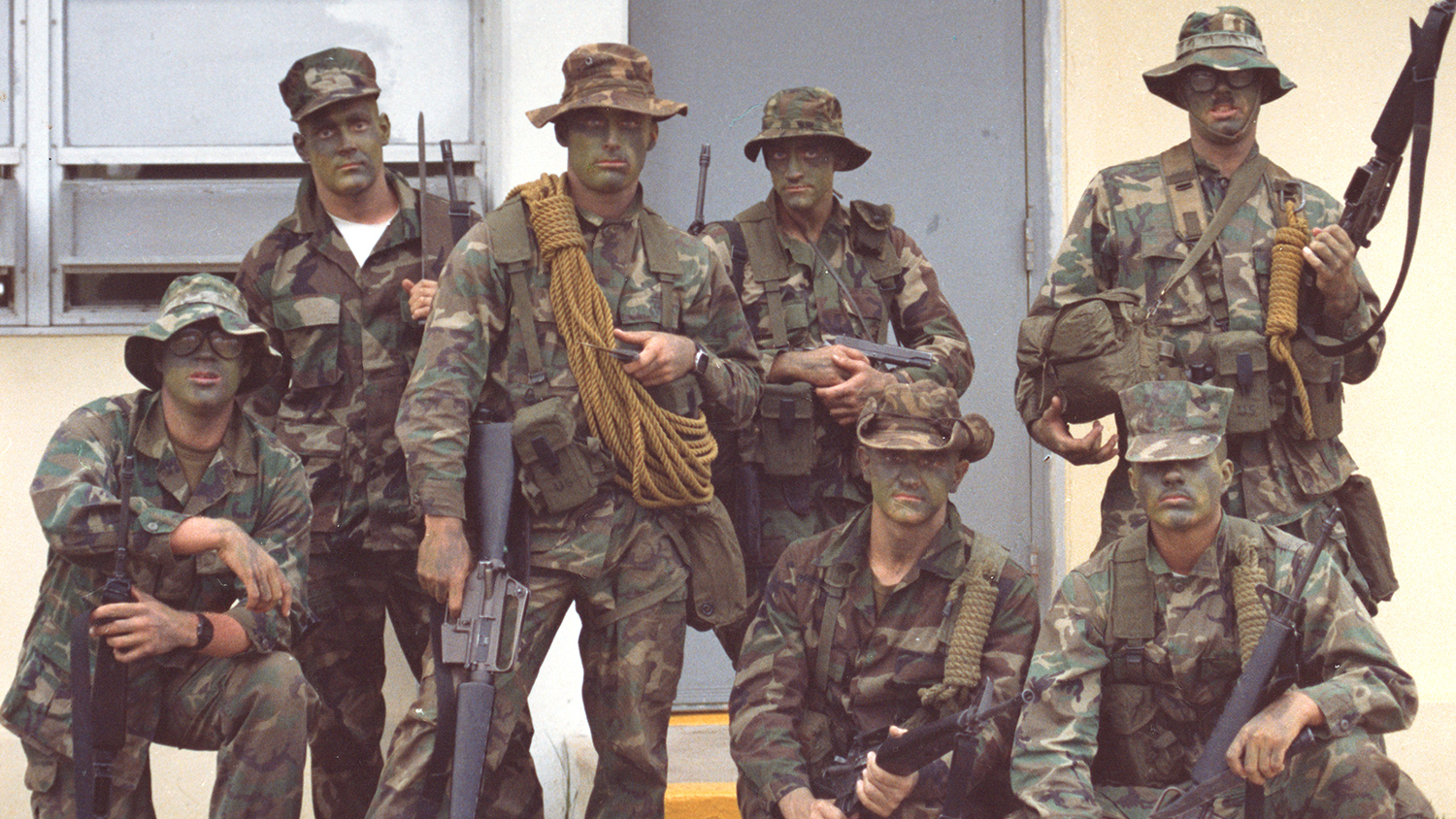
In addition to general marksmanship training, Van Orden significantly impacted the Marine Corps sniper community. Just as his father was instrumental in the beginnings of a formal sniper program, he was instrumental in its development and shaping after Vietnam. With MTU from 1977 to 1979, he incorporated his father’s guidance and lessons learned on the modern battlefield into sniper courseware and manuals. Called an “original thinker of the sniper business,” Van Orden offered valuable opinions on sniper operating procedures and integration into infantry units. During this time, he co-authored a revision of FMFM 1-3B Sniping, the primary manual and guidebook for Marine snipers.
Van Orden remained active in the shooting community giving speeches and presentations after retiring as a Lieutenant Colonel in 1983. Tragically, his influence and life were abruptly ended in 2013. Following dinner out with family, Van Orden’s car was struck by a driver fleeing police. He passed away the following day at age 73. Though devastated by the loss, his family and the marksmanship community continue to celebrate his life and recount his accomplishments.
Unlike the previous three generations, George Kelley Van Orden did not grow up dreaming of becoming a Marine. Ten-year-old George moved with his mother to Virginia after his parents divorced. Not until age 20, as a laid off concrete truck driver, did George decide to enlist. In 1982, he was sworn in by his father and began boot camp.
Private First Class Van Orden entered the “high speed” world with 9th Engineer Battalion’s newly formed Engineer Reconnaissance Team. Here he received advanced training in demolition, jungle warfare, and route recon.
He transferred stateside one year later to Mountain Warfare School. Initially assigned to the maintenance section, Van Orden volunteered for an instructor billet. The staff turned him down, given that he was only a Lance Corporal, but eventually conceded. He instructed company size units on topics such as demolition, rock climbing, navigation, digging snow caves, and making survival kits. Holding a position typically occupied by a Sergeant or higher, Mountain Warfare staff dubbed him “LCpl of the Marine Corps.”
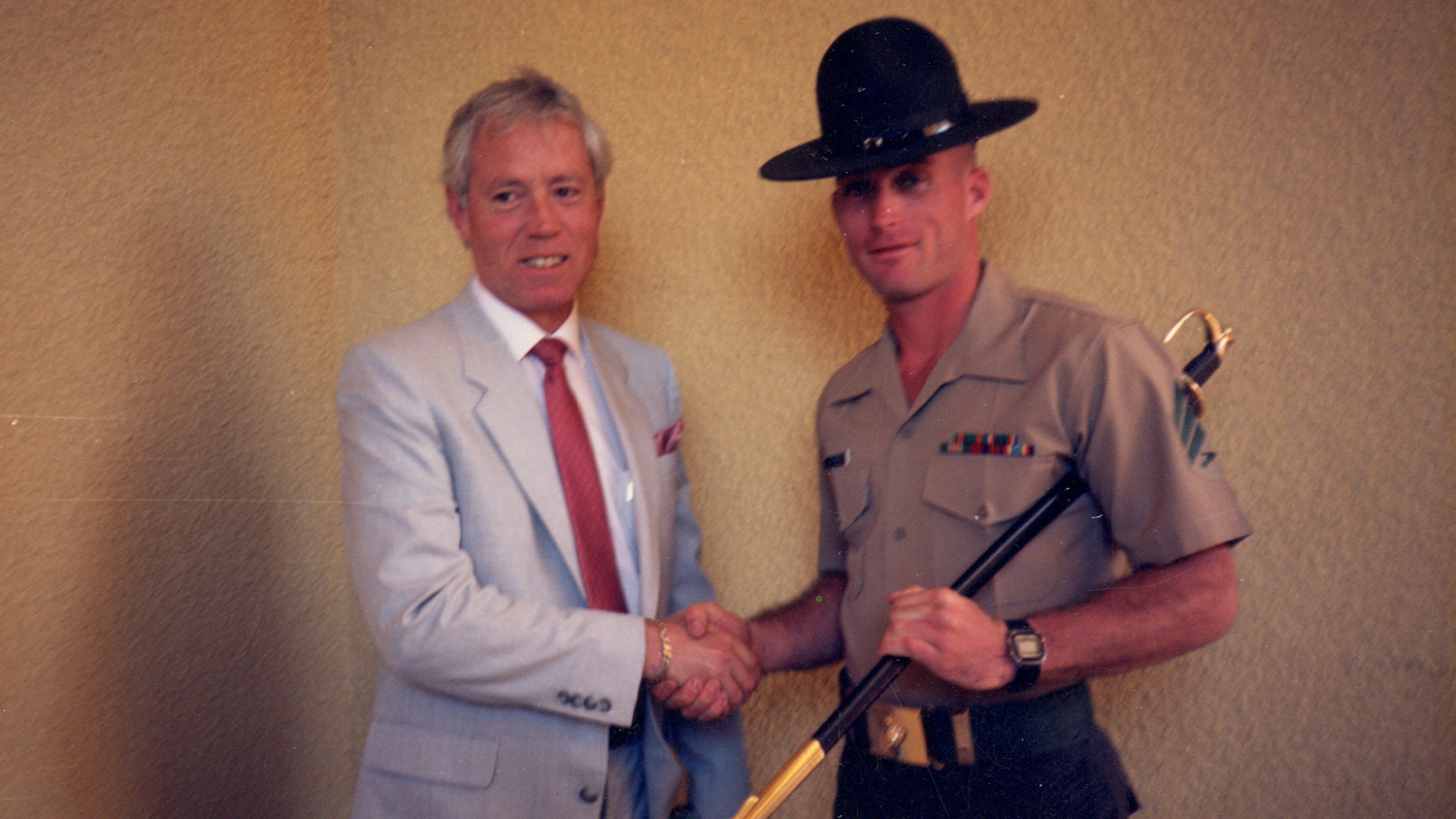
Following another fleet tour and over two years on the drill field, Van Orden again volunteered, this time for a position typically filled through the “voluntold.” The Minefield Maintenance section of Naval Station Guantanamo Bay, Cuba was a little known and little loved duty. Conditions were arduous, the work tedious, all of it dangerous.
Assigned the task of, “locating, disarming, removing, replacing, and rearming” live mines in one of the largest minefields in the world, these Marines required acute presence of mind and extreme attention to detail. Even in a peacetime environment, Marines working the minefields still rated a combat fitness report. “I always described it as the only job I ever had where you could do everything right and still get killed,” said Van Orden. A stray animal or even roots of the dense vegetation growing around the mines could cause just enough pressure to set one off.
Mistakes counted for many of the deaths and close calls. A Marine died the year Van Orden arrived. The mine detonated when a pocket knife fell from the Sergeant’s flak jacket. For all the incidents involving a mine that should have blown but didn’t, the surviving Marines were inducted into the “ghost club.”
Hunting was an essential part of the job. Deer constantly worked their way into the minefields, causing accidental detonations and posing a serious threat. Once, after receiving word of a detonation at night, Van Orden’s team responded. Spotlighting the area yielded no information, so the following morning they went in. Van Orden and another Marine carefully made their way through waist high grass into the section where the detonation occurred. Suddenly, right beside them something moved. A startled deer, with hind legs paralyzed from the previous night’s blast, crawled away through a mine cluster three paces from their safe zone. Knowing they were dead, purely out of instinct, the men dropped, backs to the blast, arms shielding their heads. They waited with resignation. One antipersonnel mine was plenty to do the trick. This deer was crawling through four of them, surrounding an antitank mine. They waited, but nothing happened. When the deer stopped before entering the next distant group of mines, the Marines rose and moved back to safety faster than they had ever previously dared in a live minefield.
The Marines tried to understand why the mines had not detonated. Checking records from a few months earlier, the last time the mines were replaced, they made an astonishing discovery. Sitting in a depression on the landscape, pooling water had rusted the antipersonnel mines rendering them useless. It was determined for that cluster, and only that one, the antitank mine should be replaced, but the antipersonnel mines be removed and not replaced. It was a lifesaving decision, and an unbelievable break for Van Orden. He had become a member of the ghost club.
Van Orden completed his minefield tour in 1991, entering again into the special operations community. As an instructor at Amphibious Recon School in Coronado, CA, Van Orden taught demolition, survival, and land navigation to new Recon Marines. He rewrote all his own course curriculum. He was, “unparalleled as a demolitions instructor” wrote one reporting senior. “Could teach a blind man to see.”
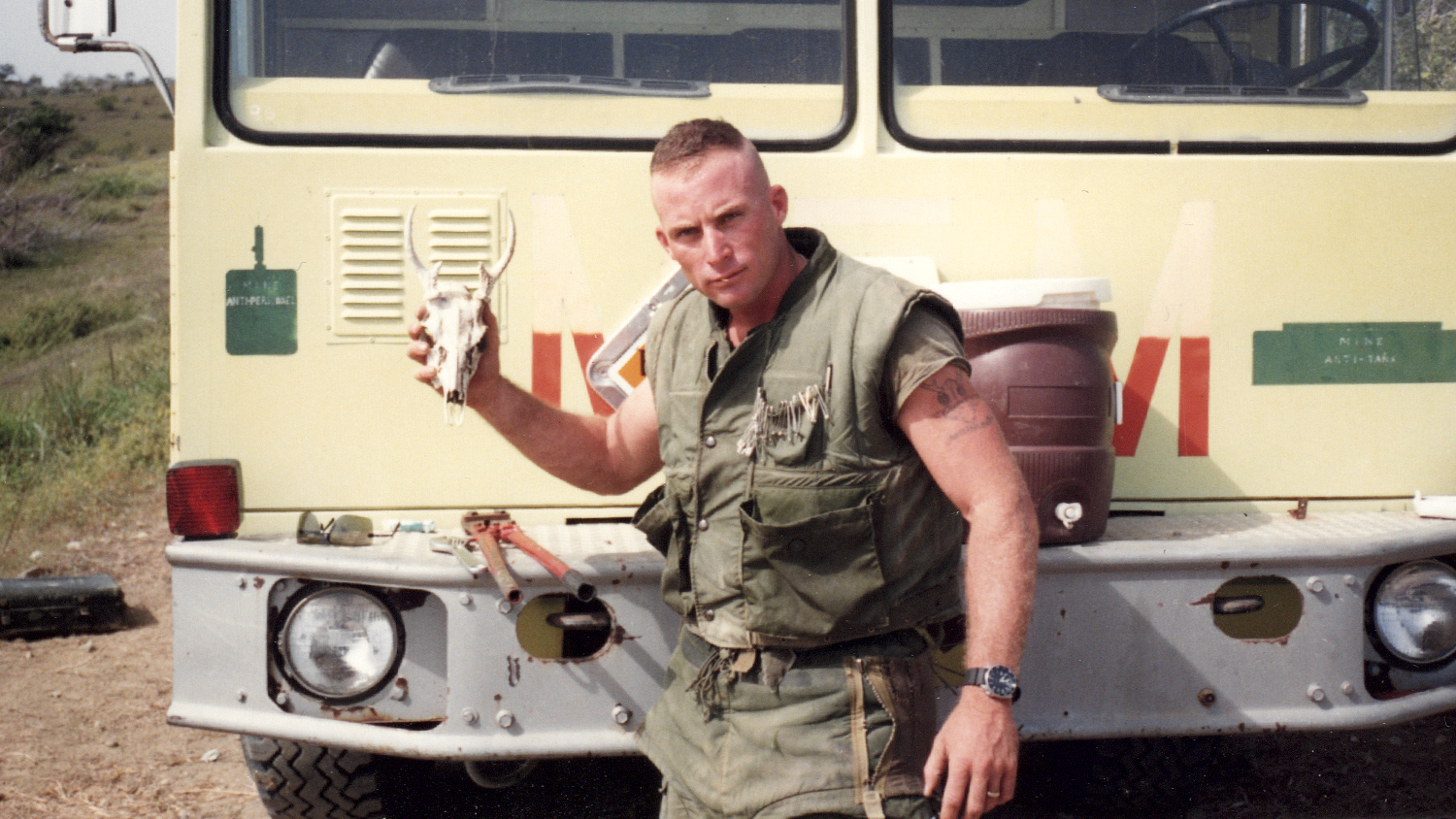
Van Orden’s enlisted career highlighted the best of what the Marine Corps has to offer. He lived the things that recruits in boot camp dream they will do. He earned meritorious promotion to multiple ranks and maxed physical fitness tests. He jumped from helicopters and airplanes, scuba dived with dolphins and Navy Seals. He was trained to shoot, survive, and blow things up. He endured incredible stress, even facing death, and proved his mental and physical toughness. He was a Marine’s Marine. Everything about his career was enviable and influential, but it was not over.
In 1996, Van Orden was promoted to Warrant Officer, assuming much of the same responsibilities as his grandfather as a Range Officer. Called a “Marine Corps legend,” “master of combat firearms,” and “marksmanship expert,” these are a fraction of the praise George Kelley garnered.
Like his grandfather, Van Orden acquired the responsibility of weapons testing. His role was key in testing and fielding weapons such as the Joint Service Shotgun, second generation Designated Marksman Rifle (DMR), and M16A4. He also evaluated the Squad Advanced Marksman Rifle (SAMR), helping form the SAMR currently used in Afghanistan.
In 2003 CWO3 Van Orden retired, but was still not finished. Through years of teaching survival and experimenting with all the gear for himself, Van Orden developed his own survival kit. Founded in 2002, Pro Survival Kit Company has become one of Van Orden’s lasting contributions to the U.S. military. The Navy currently purchases his kits for standard issue to Navy Seals. The Special Forces community is his principle customer and has carried them around the world.
Many accomplishments adorn the careers of these men, but one remains unique. Their family boasts three generations of Marine Distinguished Marksman. This is the high honor coveted by all competition shooters. “The Distinguished Badge is probably the most important thing he shoots for,” said George Mason. “He’s a professional. For that reason, Marines achieving that award never have to qualify again.”
The first George, though an expert rifleman with multiple awards, did not achieve distinguished. George Owen, a competition shooter from the beginning, earned the badge over a five-year period. George Mason, always known for his marksmanship exploits, earned it in three.
George Kelley displayed the same attitude towards competition shooting as he had towards the Marine Corps in early life—not interested. Not until he became a Warrant Officer did Van Orden return to competition shooting. In 2001 he earned the distinguished badge, thus completing the legacy of his family and name.
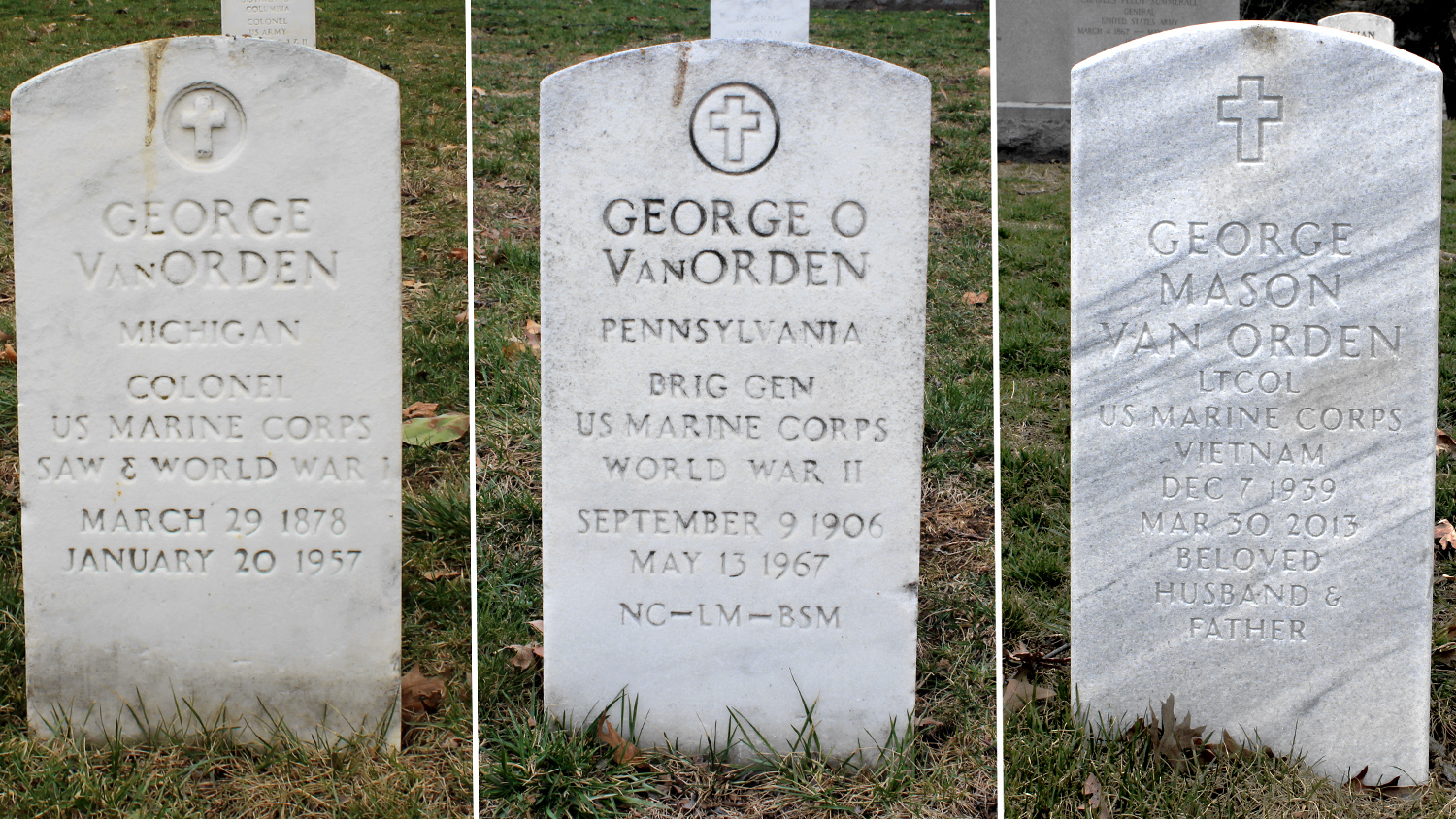
George Kelley Van Orden’s father, grandfather, and great-grandfather are buried in Arlington National Cemetery. Climbing the hill to their graves in section 30, far away from the crowds moving towards the Tomb of the Unknown Soldier or Arlington House, is a humbling experience. At the top standing near their graves, a spectacular view of countless rows of headstones can be seen and silently considered. It is striking to think this view contains a mere fraction of the 400,000 veterans buried there. Even more striking to consider each one has a story. Many of those stories, including the Van Ordens’, are still inspiring people today.
This article was originally published in Leatherneck magazine. Reproduced with permission.














